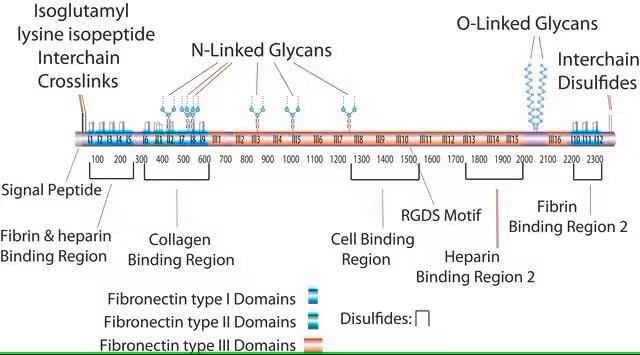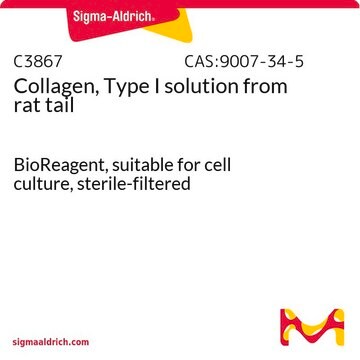F1904
Human Fibronectin
from human plasma, powder, purified 120 kDa α Chymotryptic Fragment (cell attachment region), suitable for cell culture
Synonym(s):
Fibronectin Fragment, Human Fibronectin
About This Item
Recommended Products
Product Name
Fibronectin 120 kDa α Chymotryptic Fragment (Cell Attachment region), Human purified,
biological source
human
Quality Level
form
lyophilized
mol wt
120 kDa
manufacturer/tradename
Chemicon®
concentration
1 mg/mL
technique(s)
cell culture | mammalian: suitable
input
sample type induced pluripotent stem cell(s)
sample type epithelial cells
sample type mesenchymal stem cell(s)
sample type: human embryonic stem cell(s)
sample type hematopoietic stem cell(s)
sample type neural stem cell(s)
sample type pancreatic stem cell(s)
UniProt accession no.
shipped in
dry ice
storage temp.
−20°C
Gene Information
human ... FN1(2335)
General description
Contains the cell attachment region of the fibronectin molecule.
Application
Physical form
Storage and Stability
Analysis Note
Legal Information
Disclaimer
Storage Class Code
11 - Combustible Solids
WGK
WGK 1
Certificates of Analysis (COA)
Search for Certificates of Analysis (COA) by entering the products Lot/Batch Number. Lot and Batch Numbers can be found on a product’s label following the words ‘Lot’ or ‘Batch’.
Already Own This Product?
Find documentation for the products that you have recently purchased in the Document Library.
Customers Also Viewed
Articles
Extracellular matrix proteins such as laminin, collagen, and fibronectin can be used as cell attachment substrates in cell culture.
Protocols
Dilute fibronectin to the desired concentration. Optimum conditions for attachment are dependent on cell type and application. The typical coating concentration is 1 – 5 ug/cm2.Fibronectin coating protocol, products, and FAQs at sigmaaldrich.com
Dilute fibronectin to the desired concentration. Optimum conditions for attachment are dependent on cell type and application. The typical coating concentration is 1 – 5 ug/cm2.Fibronectin coating protocol, products, and FAQs.
Related Content
This page covers the ECM coating protocols developed for four types of ECMs on Millicell®-CM inserts, Collagen Type 1, Fibronectin, Laminin, and Matrigel.
Our team of scientists has experience in all areas of research including Life Science, Material Science, Chemical Synthesis, Chromatography, Analytical and many others.
Contact Technical Service



